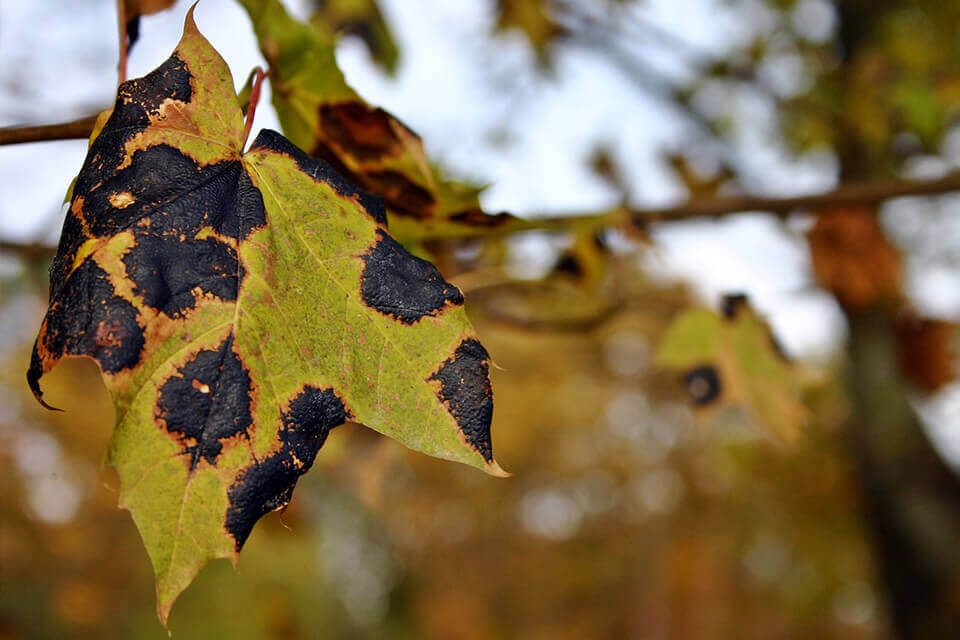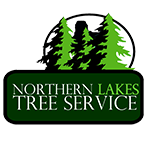Top 10 Most Common Tree Diseases
Save your trees before it’s too late.
Are you sick of non-stop pests, fungi, and other uncontrollable elements in your back and front yard trees?
Most of our habitats in Bonners Ferry express their natural beauty; they glow and stand out even without the help of landscaping, trimming, reshaping, etc. But it is just that some of our little creatures are trying to destroy these trees.

In this case, we have to learn: 1.) Types of diseases that usually attack our trees; 2.) Assess if it can be a DIY project; 3.) Do we have any idea with regards to the right timing or ideal season of when to treat our trees? 4.) If not, who will and how will we eradicate those problems?
The top 10 were on the list of common diseases on trees:
- Anthracnose
Anthracnose is a fungal disease that tends to attack plants in the spring when the weather is cool and wet, primarily on leaves and twigs. The fungi overwinter in dead twigs and fallen leaves. Cool, rainy weather creates perfect conditions for the spores to spread. Dry and hot weather stop the progression of the disease, which may begin again once the weather conditions become optimal. The problem can be cyclic but is rarely fatal. Anthracnose fungus infects many deciduous and evergreen trees and shrubs, as well as fruits, vegetables, and grass. Anthracnose is noticeable along the leaves and the veins as small lesions. These dark, sunken lesions may also be found on stems, flowers, and fruits. In order to distinguish between anthracnose and other leaf spot diseases, you should carefully examine the undersides of leaves for a number of small tan to brown dots, about the size of a pinhead.
Control: For the management of sycamore anthracnose, begin foliar applications of fungicides two weeks before bud break. Alternatively, trunks can be injected with a systemic fungicide. The most effective active ingredient is thiabendazole. In the case of dogwood anthracnose, foliar applications must begin at bud break and continue all through the growing season to protect the tree. For dogwood anthracnose, propiconazole is an effective fungicide. Good sanitation practices can also help reduce disease inoculum.
- Apple scab
Apple scab is an early-season leaf disease affecting crabapples. Some crabapple cultivars are more resistant than others. Scab-like lesions form on the leaves that eventually cause premature defoliation of infected trees.Control: While mostly aesthetic, homeowners may find apple scab objectionable. It can be managed with fungicide applications with active ingredients, such as fenarimol, beginning at bud break. Cedar rusts
Cedar rusts are common foliar diseases of rosaceous plants, such as hawthorn and crabapple. As with apple scab, some cultivars and species are more susceptible than others. Rust diseases require junipers as an alternate host. Orange or rust-colored leaf spots form on hawthorn and crabapples in the spring. Twig cankers can develop and cause dieback. Spore-producing structures form on the juniper branches.Control: The disease can be managed with fungicide applications on the deciduous hosts, beginning at bud break or when orange spore masses develop on junipers. An active ingredient for controlling rust diseases is triadimefon. Prune out rust galls on junipers when noted.
4. Diplodia tip blight
Diplodia is a common disease of Austrian and other pines. The disease initially develops at the base of the tree and progresses upward. Candles and needles begin to expand before becoming infected and dying. Key symptoms include dead shoots with needles half-elongated, lots of resin, and witches' dead shoots. Black fruiting structures are present between needles and on cones.Control: Management includes good sanitation, pruning, and applying fungicides, beginning at bud swell. An effective active ingredient for control is thiophanate-methyl.
5. Dothistroma needle blight of pines
Dothistroma needle blight is a fungal disease that causes premature defoliation in mature trees and severe stunting and death in young trees. It can be found in more than 35 pine species and hybrids throughout North America. However, it is not found in the western Great Plains or central Rocky Mountains.
Control: For management, begin applications of a protective fungicide at bud break. Products with the active ingredient combination of copper hydroxide and mancozeb are known to be most effective. Pruning out severely infected branches can also help in managing the disease.
6. Lethal yellow of the palm
Lethal yellowing is an important disease of palms in Florida and Texas. It is typically found in Canary Island date palm, coconut palm, date palm, and other species, though native palms are usually not affected. Lethal yellowing is caused by a bacteria-like organism called a phytoplasma and is transmitted by a planthopper insect.
Control: Preventative and therapeutic treatments with an antibiotic injected into the trunk can help manage the disease. An effective active ingredient is oxytetracycline hydrochloride. Removal of moderately infected plants and use of resistance species are also recommended. Insecticides for control of vectors have proven ineffective in managing disease spread.
7. Oak Wilt
Oak wilt is a systemic fungal disease that results in tree death. The disease can be found in more than 20 oak species in Minnesota, Pennsylvania, South Carolina, Texas, and recently, New York. The disease is transmitted by infected beetles and through root grafts.
Control: Trees in the white oak family can be treated therapeutically. Trees in the red oak family cannot For prevention, inject trees with a systemic fungicide, such as propiconazole, during the growing season.
8. Powdery mildew
Powdery mildew is caused by a number of fungal pathogens that grow superficially on the plant surface, producing white mycelia (fungal threads) and spores. It can be found in a host of trees throughout North America. Leaf, flower, and shoot distortion and stunting occur when the fungus attacks young tissue. As the level of infection increases, tissue becomes dried and brown. Premature defoliation may also occur. On susceptible rose varieties, flower production may be inhibited.
Control: For management, select resistant varieties, avoid planting in shaded areas and overcrowding, and practice good sanitation. Begin fungicide applications when symptoms are first noted. An effective active ingredient for control is triadimefon.
- Photinia leaf spot
Photinia leaf spot is mainly found in the South and is an important defoliator of red-tip photinia, Indian hawthorn, loquat, and some pear cultivars. Infections by the fungal pathogen begin as small circular, dark red spots on leaves, stems, and fruit. Spots coalesce into large blotches with gray centers.
Control: Management strategies include purchasing disease-free plants, sanitation, planting in sunny areas, and fungicide applications. Begin treatment at budbreak and repeat applications until most of the leaves have matured. For very susceptible species such as photinia, additional fungicide applications may be necessary for good control. Applications of products with the active ingredient propiconazole are the most effective. Planting resistant varieties and species can also help with control. Thousand-canker disease
Thousand-canker disease affects walnuts. It’s mainly found in the Western United States, although black walnuts in Tennessee were found to be infected last summer. It is vectored by walnut twig beetles and forms small cankers around their galleries. Over time, these small cankers coalesce into girdle branches and stems. Trees can be infested for years before showing symptoms. Foliage in the upper branches of declining trees wilts and becomes yellow.Control: Once a tree begins to decline, it is often dead within several years. At present, there are no chemical management options for control.
Knowing some of the common diseases that might attack our trees in Bonners Ferry, we can start thinking that this is not just a DIY project. It seems that we need to seek advice from professionals. This might cause us stress. Or you might do wrong procedures that can damage or, in the worst case, destroy living things. So to be stress-free, why don’t we hire the best for tree disease control?
Trees have a perfect season in which to do work. Considering the time frame in which we can benefit best from the tree, an American tree service in Bonners Ferry is available to help you. They are knowledgeable of when to perform treatment for your trees and give appropriate and safe-free treatment that will not bring harm to your trees, surroundings, or children.
Northern Lake Tree Services is the best to call when dealing with these repetitive problems and tree care. With good customer care and great staff, it is low-cost but with good quality of work. It won’t cost you that much to eradicate your problems.
For free estimates and other services for Bonners ferry trees, just contact:
Damon M. Bretthauer
1-877-905-TREE(8733)
Phone: (208) 443-3600
Cell: (208) 610-3718
"It is never too late to save all the trees we love.”
